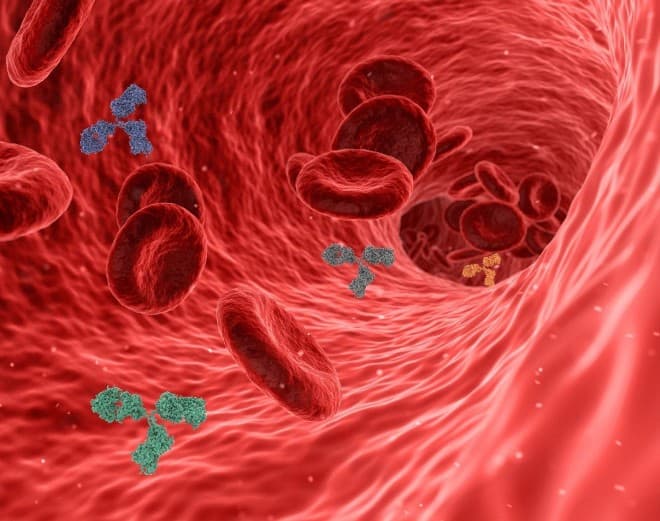
Photo credit: by Swiftsciencewriting, Pixabay
COVID-19 is taking a serious toll on various aspects of people’s health all over the world. Although COVID-19 is a respiratory disease, it has effects on other target organs in the body such as the heart, blood and kidney. Apart from developing breathing problems that require ventilation, another major issue among critically ill COVID-19 patients is the development of clots in the blood vessels. When clots form they can block arteries in the heart, causing heart attack, in the lungs (pulmonary embolism) and in the brain may result in stroke. Blood clot formation in COVID-19 cases may thus increase adverse outcome and risk of death.
Clotting risk with COVID-19 infection
Infection by the SARS-CoV-2 virus causes widespread inflammation in the body system and production of antibodies that can increase the risk of blood clots. The risk of blood clots is known to be higher in patients that have moderate to critical illness severity. The risk is driven much higher in patients that are admitted to the hospital or in intensive care units. Although the risk is lower in mild COVID-19 cases, when patients are self-isolating at home, less movement and restricted activities may also lead to poor blood circulation that may promote blood clots formation. Thus, it is important for covid-19 patients to move around and stay hydrated to keep the blood flowing. It is not recommended to stay in bed all day.
Signs of blood clots and possible stroke or heart attack
All COVID-19 patients need to monitor for signs of blood clots such as weakness in one arm or leg, difficulty speaking, new swelling, tenderness, pain or discoloration in the arms or legs, sudden shortness of breath, chest pain radiating to the neck, arm, jaw or back.
Mechanism of clot formation in COVID-19
The mechanism underlying the clot formation in COVID-19 patient is not fully understood. However, a research study by the McMaster Platelet Immunology Laboratory shows that blood of critically ill COVID-19 patients contains some antibodies that form immune complexes that can activate platelets thus resulting to blot clot formation. On the basis of this potential mechanism of clot formation, the use of blood thinners / anticoagulants have been adopted in clinical practice.
Anticoagulants use in COVID-19 infection
According to Thrombosis Canada, routine use of blood thinners is not recommended in mild cases of COVID-19 that do not require hospitalization. So if you have mild COVID case and are recovering at home, you do not need to take any blood thinners. All you have to do is to keep active within the house, move around and keep your feet elevated when sitting.
Patients that had previous history of deep vein thrombosis (DVT) or pulmonary embolism (PE) may need to use anticoagulants such as low dose daily Aspirin, but this should be started in consultation with the doctor. If you have any other concern about your risk of clot formation, talk to your healthcare provider to assess your risk and provide you a recommendation.
Hospitalized COVID-19 patients are at higher risk of blood clot formation especially if they are in the intensive care unit (ICU) thus are routinely given anticoagulants injection such as heparin. The doctor may decide to choose other anticoagulants such as Redesca (enoxaparin, which is a low molecular weight heparin) depending on specific patient circumstances. Compression stockings may be recommended in patients that cannot use anticoagulants. There is some evidence that use of full dose blood thinners improved the outcome in hospitalized COVID-19 patients.
In conclusion, there are still many unknowns about COVID-19. So much research is going on to understand how the virus takes over the normal functioning of human body. What we know so far is that, at least in part, wide spread inflammation and increased level of clotting factors contribute to the clot formation in moderate to critically ill COVID-19 patients and increased the risk of adverse outcomes in these groups of patients.
###
Bio: Dr. Bolanle Aina is a licensed pharmacist currently practicing in the community/retail sector. She also holds a Master of Science degree and Doctor of philosophy degree in Pharmacy from the University of Manitoba. She is passionate about health information and medical communication to promote healthy living and optimal drug therapy.
Your email address will not be published. Required fields are marked with *.